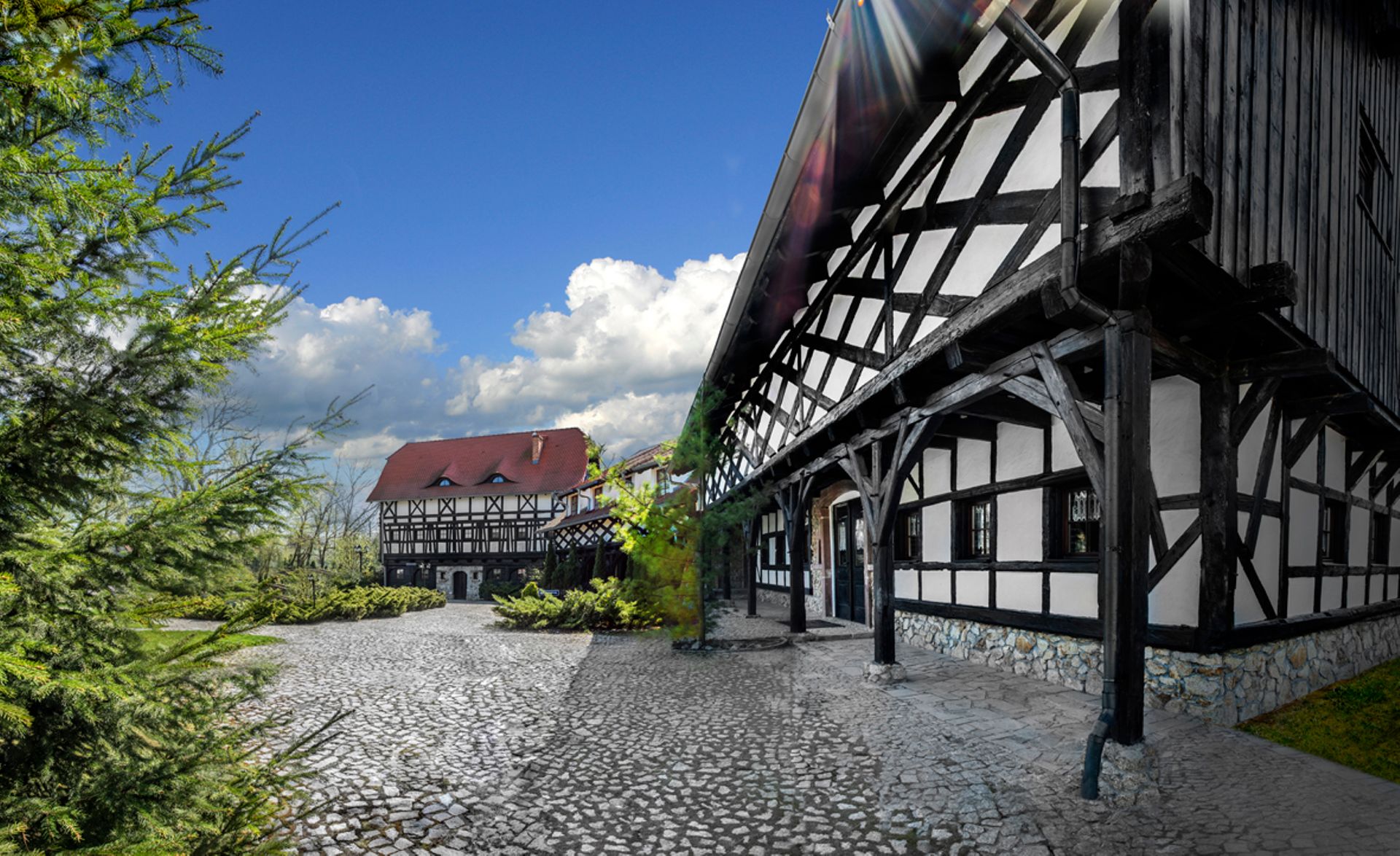The German name for Jarnołtów is Arnoldsmuhle and comes from the name of the Wrocław burgher, Arnold of Legnica, whose mill at this place mentions a document from 1271. This mill was located on the Bystrica River, in the Middle Ages called Leśna. From the earth books we learn that in the middle of the 14th century Jarnołtów was a farm with 7 hobs of land and a two-wheel mill was already working in it.
Mill in Jarnołtów. F. G. Endler's etching, 1807 The engraving depicts the village of Jarnołtów located on the Bystrica River. On the left is Arnold's mill from Legnica, in the central part you can see the Palace, which is no longer there today.
Since the 16th century, the history of this place has been inextricably linked with the Artzat family (also called Arzat or Arzt), which among many possessions also held Jarnołtów. The family belonged to powerful families with a great influence on the history of Wrocław and its surroundings. Among other things, we know that three of its representatives sat on the City Council and belonged simultaneously to the royal court.
Another family reigning in Jarnoltów was the Hoffmann von Hoffmannswaldau dynasty, this estate belonged to it since the 18th century. Representatives of this family also held high positions in the City Council of Wrocław, for example, Hans Christian Hoffman (1644 to 1724) held the position of President of the Council and Governor of the Duchy of Wrocław. From historical records it is known that in 1795 the village had a manor house, a farm and a mill and 112 people lived in the settlement — including a distiller, blacksmith, barber and brewer.
In 1945 Jarnołtów found itself, like many other villages, towns and settlements, within the borders of Poland, in the areas of the so-called Reclaimed Lands. Administratively it belonged to the municipality of Smolec and then the Jerzmanowo cluster. On January 1, 1973, the town was promoted, it was annexed to Wrocław, as one of its many settlements. It did not, of course, change her typically rural landscape. Although the first suburban houses have been built in this area since the beginning of the 20th century, but most of the buildings are still farms.
As the inhabitants of Wrocław grew rich, in the vicinity of Jarnołtów, as well as in other peripheral settlements of the city, more and more detached houses and farms adapted to residential and recreational needs began to appear. This phenomenon intensified with the bodily breakthrough of 1989. And it is at this time that the story of our Tavern has its origin.



















